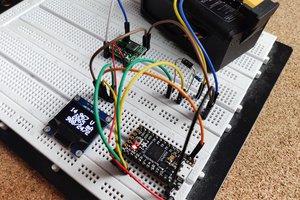Background
The official LEGO Power Functions battery packs have some limitations:
- 750mA current limit (http://www.philohome.com/pfrec/pfrec.htm#Real)
- If you try to optimize your "battery bill", you will want to use rechargeable batteries, with additional drawbacks, like lower voltage ( 7.2V instead of 9V) and 6-10 hours charge time
For the Sbrick (https://sbrickstore.com/) users the battery pack limitation seems to be more painful, because Sbrick can source ~3A / channel (https://social.sbrick.com/wiki/view/pageId/9/slug/user-guide-for-sbrick)
The official LEGO LiPo battery is pretty expensive, and has 2 cell battery which results a low 7.2V output.
"naked" LiPo Issues
It would be self-evident to use a 3 cell LiPo battery, but It seems to be dangerous because of the following facts:
- There is no current limit, you can easily burn down the battery and even your LEGO parts!
- The fully charged 3 cell Lipo's voltage can exceed 12.5 V, and It's to much for the IR receiver and for the Sbrick controller!
- There is no over-discharge protection in the standard RC LiPo batteries, so and over-discharged LiPo can easily catch fire at the next charging attempt!
Solution
Here comes the Power Brick!

Features:
- High efficiency DC-DC regulator, It has a constant 9V output voltage, regardless of the load.
- Over-discharge protection: The power supply simply shuts down, when the battery is discharged.
- Over current protection: 3A peak, 2A continuous current.
Among giants :-)

...another LiPo benefit:
The charging time of a LiPo battery can be even 10 times less, then the charge time of a normal rechargeable AA or AAA battery.
You can use a general RC LiPo charger for your batteries.
The 500mAh battery in the example can be charged in less than an hour!
Size matters
The size of the Power Brick is 2 * 4 studs, with the LiPo battery the total size is far smaller than the official LEGO battery pack.
 x-labz
x-labz


 jasonwinfieldnz
jasonwinfieldnz
 Manuel Alfonso
Manuel Alfonso
 AirCruiser
AirCruiser
 zvodd
zvodd
The Bauhn LED projector Review may even be worth considering if you’re searching for a reasonably priced LED projector. A 1500:1 contrast ratio, full HD resolution, and a lamp life of up to 30,000 hours are just a few of the outstanding characteristics of this adaptable projector. Fine Projector will be examined in more detail in this evaluation to determine whether it is cost-effective.Bauhn Led Projector Review (fineprojector.com)
Building and Design Quality